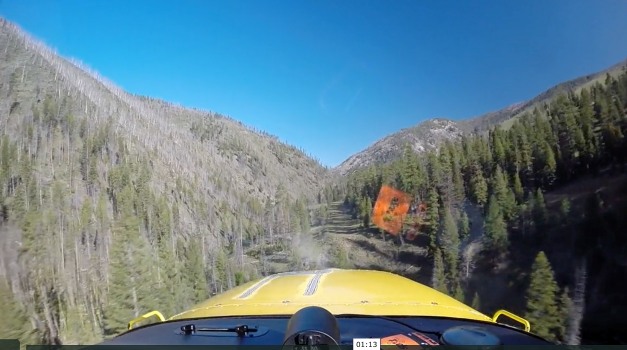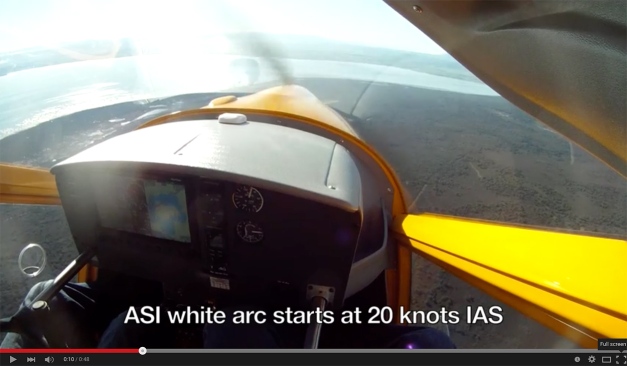Here’s a short video of a bit more back country bush flying – a landing into a very small, high-altitude ‘runway’ between the trees at Simonds Strip in Idaho. Aircraft is a Cessna 185 with a STOL kit, not as one wag commented, ‘only a 747 would be big enough to carry the pilot’s b***s!’
Category Archives: Uncategorized
How to build a wind turbine in 6 minutes
 Not aviation, strictly speaking, although aerodynamics plays a key part – wind turbines are playing an increasing role in the production of ‘renewable’ energy.
Not aviation, strictly speaking, although aerodynamics plays a key part – wind turbines are playing an increasing role in the production of ‘renewable’ energy.
This video, from Mid-American Energy shows the building of a single wind turbine, from digging the first hole through to commissioning – a total time of about 3 weeks. Fascinating stuff.
Click picture to view video
A32 – Aeroprakt-ically magic!
[Please note – many subscribers have reported that the embedded videos in this post did not work correctly. I have replaced them with links to the YouTube versions, so they now work as usual. Please click the picture to go to the YouTube video – view in hi-res if possible]
I have now spent over 4 hours flying the new Aeroprakt A32, initially on my own and then with four different passengers/co-pilots. I can confirm the aircraft really does have a speed range from stall at 27 knots with flap (actually almost zero knots indicated) right up to flat-out straight and level at 120+ knots at 5,500 rpm.
Skeptical? Yes, at first I was too, even though these speeds were demonstrated to me when I flew in the prototype in Kiev late last year. There has clearly been a great deal of work done on the aerodynamics to achieve these real-world figures, while retaining the sweet slow-speed handling of other Aeroprakt aircraft like the A22 and, for that matter, the A20 before that.
Here is a video of the A32 stalling, with full flap, two people on board and about 70 litres of fuel – total weight around 560 kgs. The ASI is just about centre of the frame.
Although it is natural to think the A32 is just a revamped version of the A22LS Foxbat, an important point I must make quite clear is that the A32 is fundamentally a different aircraft. I realise comparisons between the A22 and A32 are inevitable, but the only common elements between them are the engine, propeller and the wing, and even this has received a few tweaks for the A32. From and including the propeller spinner, right back to the tail, the fuselage is all-new. There are no flat panels on it – no mean feat in an all-metal aircraft – which remove ‘oil-canning’ and reduce drag and wind noise. The engine installation is completely different from the A22, with air ducting to smooth airflow, reduce drag and improve cooling. The oil radiator is mounted behind the coolant radiator, so there’s no need for an oil thermostat to speed up the warm-up.
The control system is all cable (like the iconic Piper Cub) and the all-flying tailplane is powerful and well-geared – particularly useful during landing, where even at 30 knots indicated, you don’t run out of elevator. Trim changes between take-off, cruise and landing are much smaller than on the A22 and it is easier to adjust the manual trim lever quickly to the required setting.
The cabin is actually a bit narrower at the elbow than the A22 (although it takes a ruler to confirm it) but is taller and the panoramic view through the windshield gives an impression the cabin is actually wider than the A22. The windows behind the seats are well-positioned to give a great view out. And there are plenty of storage pockets around the cabin for all those odds and ends so necessary to us pilots.
Here are a few more numbers: cruise speed at 4,800 rpm (Rotax’s recommended minimum continuous rpm) is around 107-109 knots true, burning about 16 litres an hour. To cruise at 100 knots, you’ll need to drop the rpm to around 4,200, for a fuel burn of about 14-15 litres an hour. Approach speed down finals with flap should be no faster than 50 knots, with a maximum – even two-up – of 45 knots indicated over the keys. Even then, there’s a little bit of float, so I’ll be gently pulling the speed down a bit further. After all, a reasonable rule of thumb for a very light aircraft is to approach at 1.5 times stall speed; so 1.5 x 27 gives 40.5 knots, well below the 45 kts I have been using. And that’s at maximum weight….
Here is another video, this one showing A32 cruise speeds. The SkyView screen shows, on the left side, top to bottom, indicated airspeed (IAS), true airspeed (TAS) and ground speed (GS) so you can see the differences. RPM is top centre. Sorry this one is a bit blurred and shaky, the winds aloft were quite strong and bumpy that day – close to 30-35 knots and occasionally more. Also, it turns out the Garmin VIRB camera I used is not as good at close focus as my trusty old GoPro, which was used a day later for the video showing stalls.
Where the A22LS Foxbat is a great ab-initio trainer and go-anywhere farmer’s aircraft, the A32 feels like it is much more of a sport cross-country aircraft and intermediate trainer. Speed management is particularly important in this aircraft – if you’re used to floating a bit due to overspeed when landing the A22LS Foxbat, you’ll run out of runway before the A32 stops flying – you’d better believe it!
Experienced A22LS Foxbat pilots will quickly see and feel the differences in the A32 – it’s a great addition to the Aeroprakt range.
We’re working on some more videos to show the aircraft flying, both inside the cabin as well as external sequences. Meanwhile, at least a couple of Australian aviation magazines are doing full flight tests for publication later in the year – I’ll announce when and where as soon as I have confirmation.
Aeroprakt A32 flies in Australia
 Monday 20 July – the first Aeroprakt A32 in Australia, VH-VBQ, made its maiden flight at Moorabbin Airport. After flying some circuits I then flew it to its new home at Tyabb Airport.
Monday 20 July – the first Aeroprakt A32 in Australia, VH-VBQ, made its maiden flight at Moorabbin Airport. After flying some circuits I then flew it to its new home at Tyabb Airport.
I’ll be writing a full ‘first impressions’ report soon but meanwhile, I can tell you the aircraft exceeded all my expectations – I even had to take two friends for flights just to confirm I wasn’t dreaming.
All the development work on the aerodynamics has paid off handsomely, with a quiet and smooth cruise, while retaining all the short take-off and landing characteristics which are the hallmarks of Yuriy Yakovlyev’s designs.
Today’s flying totalled less than 90 minutes…watch this space for more.
As usual, thanks to Mike Rudd for the photo – click on it for the full size version
Aeroprakt A32 engine bay
Foxbat Australia – new website
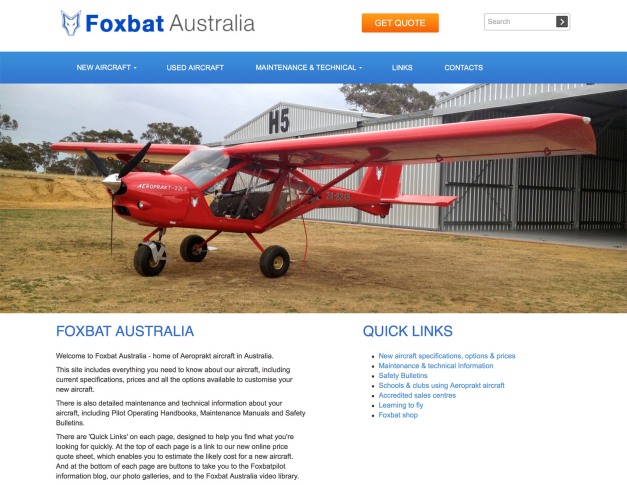
Foxbat Australia is pleased to announce the launch of its new website at www.foxbat.com.au
The new site has been designed to make it easier for visitors to quickly find the information they are seeking, whether it’s specifications and prices of new aircraft or service bulletins and other maintenance details. Visitors will also be able to view contact details for Accredited Sales Centres in Australia as well as Schools and Clubs using Aeroprakt aircraft.
A new feature of the site is an online cost quote generator where a particular aircraft and options can be selected and an overall price breakdown generated for either on-screen viewing or print-out.
Finally, there are links to high quality photo galleries at Flickr, the Foxbat video channel on YouTube and to the Foxbatpilot Blog.
There is a whole lot more on the site,which has been optimised to run on desktop as well as mobile media – have a look, hope you like it!
Now that’s what I call a bush plane!
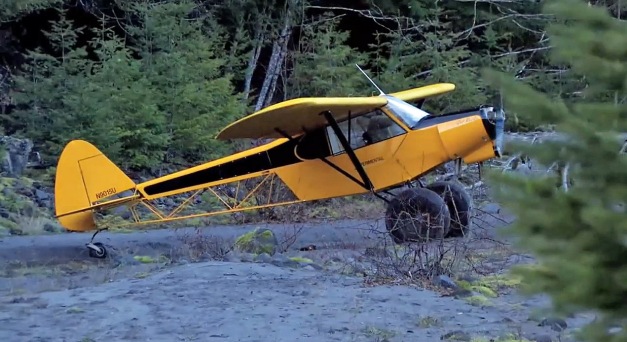 Here’s Greg Miller in his Super Cub almost doing the impossible. Landing on this particular river bed is ‘even a bit challenging for me and the Super Cub’. It’s not smooth and there are plenty of big chunks of rock lying around…
Here’s Greg Miller in his Super Cub almost doing the impossible. Landing on this particular river bed is ‘even a bit challenging for me and the Super Cub’. It’s not smooth and there are plenty of big chunks of rock lying around…
Greg is well-known for a series of videos/DVDs called ‘Big Rocks and Long Props’, featuring a variety of much modified aircraft, including Maules and Super Cubs. Alas, only short clips are available via YouTube – to get the real thing, you’ll have to order the DVDs from his website at: www.http://bentpropproductions.com Try Volume One to start with – I can recommend it.
Thanks to Foxbatpilot subscriber Geoff Robinson for the link.
Click the picture for the video link
Impact – a cautionary tale of bush flying gone wrong
 Here’s an interesting story of a bush flight that didn’t go quite according to expectation. A pilot and passenger executing a low level wildlife survey flight find themselves in a bit of bother when the passenger declares he needs a ‘comfort stop’ and the pilot decides to land off airport.
Here’s an interesting story of a bush flight that didn’t go quite according to expectation. A pilot and passenger executing a low level wildlife survey flight find themselves in a bit of bother when the passenger declares he needs a ‘comfort stop’ and the pilot decides to land off airport.
While reading, I found many of the pilot’s comments sounded just a little bit too familiar. Were those occasional close calls just exciting experiences to relate in the flying club bar or had I taken them seriously as the lessons they almost certainly were?
This story is written candidly by the pilot and has useful lessons for us all – read to the end!
Story courtesy of Backcountry Pilot.
Wyoming Ridgetop
Another well-made bush flying video with a bit of a difference – landing above the cloud on a ridge top. To many people, this is an example of what flying is all about. The space, the terrain, fortuitous circumstances, all of which come together to produce a remarkable memory – here captured on video.
I can’t help but think that had we reached Innamincka and the Dig Tree on our recent expedition, our experience may have been similar – in a uniquely Australian way.
As usual, click on the photo to link to the video.
Deadstick landing training in A22LS Foxbat
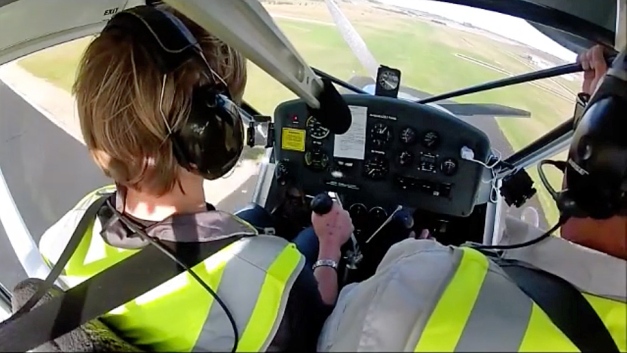 A short and useful video from Peter Reed, CFI at SkyFlyte ULA in northern Tasmania. Student Alina Herrmann is seen handling the aircraft with the engine shut down, including stalling, turning round a point and an approach and dead stick landing.
A short and useful video from Peter Reed, CFI at SkyFlyte ULA in northern Tasmania. Student Alina Herrmann is seen handling the aircraft with the engine shut down, including stalling, turning round a point and an approach and dead stick landing.
At present, this kind of training is allowed to be conducted by a CFI in controlled conditions for the purpose of advanced emergency training as detailed in the RA-Australia Operations Manual. (See RA-Aus Operations Manual, Section 3.02-2 paragraph 9) Do not try this without an appropriately qualified instructor on board!
However, in the not too distant future, RA-Australia will be withdrawing this aspect of training and intentional engine-out practice like this, even under the supervision of a CFI, will become illegal. Which seems really stupid to me and a backward step in safety improvement. Aircraft behave differently when the engine is actually stopped, as opposed to just throttled back, and practice/training with the engine off should be an essential part of the syllabus – after all, if/when the engine really stops, you’ll have enough to handle without learning how to fly a glider.
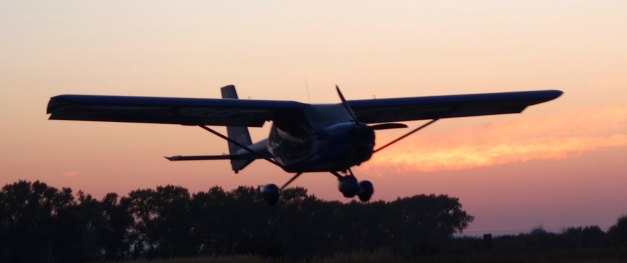 Finally, during my visit to Ukraine last year, I was at the Aeroprakt airfield, where instruction is carried out for club members. Part of the training is dead stick landings and here is a rather low-quality photo of the last one of the day….
Finally, during my visit to Ukraine last year, I was at the Aeroprakt airfield, where instruction is carried out for club members. Part of the training is dead stick landings and here is a rather low-quality photo of the last one of the day….

